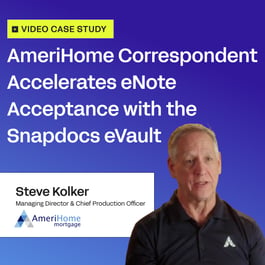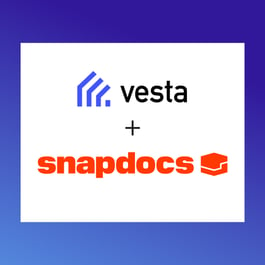With every home loan originated, the borrower signs a promissory note—a negotiable instrument that acknowledges the borrower’s promise to pay the loan pursuant to the terms of the note. For decades, the majority of notes have been executed on paper and wet-ink signed. As the mortgage industry increasingly recognizes the benefits of digitized collateral, particularly for critical documents like the note, the adoption of electronic promissory notes (eNotes), the digital equivalent of a paper promissory note, continues to increase.
While eNotes share many of the same characteristics as its paper counterpart, the legal concepts that govern eNotes differ. As a result, eNotes have unique requirements that must be met. Many of these requirements are supported or enforced by eVaults, the technology used to securely store and manage eNotes.
How eNotes Remain Secure and Enforceable
Have you ever asked:
- What legal concepts and requirements govern the use of eNotes?
- How do these requirements ensure my eNotes remain valid and enforceable?
- How do they translate into eVault requirements?
Asking these questions is an important step if you want confidence that your eVault is compliant and protects your business.
Our new white paper, Location Matters: eNote Concepts that Protect Enforceability, Negotiability & Priority, answers these questions by explaining:
- The significance of the Authoritative Copy of the eNote, and how it is distinguishable from other copies
- Why certain eNote processes (like converting an eNote to paper) can only be performed against the Authoritative Copy
- The role of both the eVault and the MERSⓇ eRegistry in identifying who maintains the Authoritative Copy, or the “Location”
- What it means to comply with the MISMO eVault System Standards, and how to determine if an eVault is certified
The Right eVault Matters
Selecting the right eVault starts with understanding what compliance really means. Historically, it wasn’t easy to tell if an eVault met all requirements. Information was scattered across sources like GSE guidelines, MERSⓇ eRegistry procedures, and MISMO specifications. Legal opinions helped provide some clarity, but they only reviewed compliance at a single point in time. But eVaults, as is standard with all technology, undergo system maintenance and enhancements which can impact the way the technology operates.
Realizing the industry’s need for alignment and clarity, MISMO established a Development Work Group (DWG) to consolidate eVault standards. This effort resulted in the development of the MISMO eVault System Standards and the MISMO eVault System Standards Certification—a program where eVault providers undergo an annual, third-party review of the eVault’s functionality to verify compliance with these standards, administered by MISMO.
This independent certification gives lenders, warehouse lenders, and investors—and any party with interests in eNotes—assurance that their eVault meets the requirements needed to protect the integrity, enforceability, and transferability of their eNotes.
At Snapdocs, compliance has always been a key pillar of our innovation. That’s why the Snapdocs eVault is the only eVault certified as compliant with MISMO’s eVault System Standards today—demonstrating our commitment to protecting our customers’ most valuable assets.
To confirm the status of an eVault provider’s certification, visit MISMO’s website.
Download the full white paper to learn these concepts and how Snapdocs helps lenders protect their eNotes, stay compliant, and realize the full benefits of digital mortgage adoption.


















